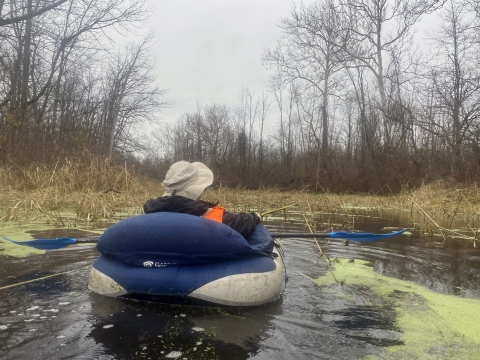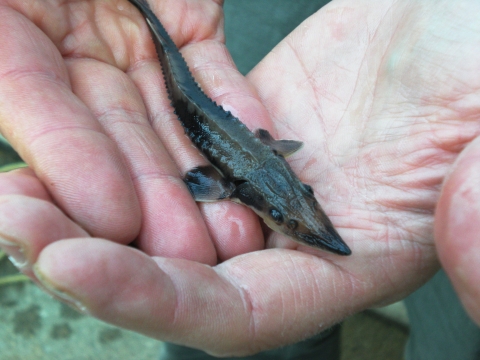While we at the U.S. Fish and Wildlife Service are known for protecting wildlife, we also connect waterways. For the community of Muskegon, Michigan, flooding has become a tired tale along the banks of what used to be a thriving river of diversity. That’s about to change.
After being dammed for more than 150 years, the release of water into the Maple River will significantly reduce flooding and create habitat for wild rice and lake sturgeon – known as manoomin and nmé, respectively, in the Anishinaabe language.
Three roads intersect the route of the Maple River. The two culverts and bridge that currently exist at the crossings are inundated frequently and must be rebuilt if they are to withstand the flow of the undammed river. These roads include fire and emergency vehicle routes and serve as primary access to several homes.
The project could have taken the town half a century to complete. Earlier this year, our agency announced that the Bipartisan Infrastructure Law would provide $1,925,650 to build hydro-dynamic bridges, speeding the project along by more than a decade.
This is more than a bridge
Construction plans include designing a gathering place for community. “It seems silly how important a road crossing can be,” said Dr. Marty Holtgren, the principal watershed scientist for the Muskegon Watershed Assembly. “The bridge design needs to geo-morphically fit the shape of the river – its character also needs to fit the community and cultural aspects of the area.”
Dr. Holtgren and the Little River Band of Ottawa Indians worked together to imagine a place-making design. Multi-lingual signage and artwork will let people experience history first-hand and explain the river’s contemporary importance.
Most importantly, Dr. Holtgren says, “When you come, you feel like it is a place for you.”
Manoomin may rebound
Alexis DeGabriele, an aquatic biologist for the Natural Resources Department of the Little River Band of Ottawa Indians, works closely with the manoomin that grows within the wetlands of the historic Maple River.
“Wild rice is vital for all of life,” stated DeGabriele. “People think of southern wild rice as river rice,” began DeGabriele as she explained how the blockage of the Maple River has complicated wild rice’s habitat. “But this area is functioning as a wetland – flow is blocked off.” Many people were surprised by how much wild rice grows in an area without a river.
Traditionally the first food to wean babies and the last food for elders losing teeth, manoomin has fed Anishinaabek communities since time immemorial. This project will support this cultural and ecological keystone species which is vital to Anishinaabek food sovereignty.
Sturgeon gain swimming grounds
Lake sturgeon populations were devastated in the early 1900s and dams have continued to restrict access to historic spawning grounds.
The Maple River’s restoration will open up waterways and improve habitat and survivability for young sturgeon. Protecting juvenile sturgeon is crucial because female sturgeon don’t enter their reproductive stage until about age 20. If sturgeon can survive their first year, they can live up to 150 years.
A new bridge is coming soon
The Maple Island community and surrounding areas are looking forward to their new river. “To capture it in two words,” summarizes Dr. Holtgren as he reflects on the project, “one would be hope and the other would be biodiversity.” The Maple River represents a path forward, and our agency is proud to be a part of a project bringing community, manoomin and sturgeon together.
Projects like this, funded by the law, will open more than 6,000 miles of streams and rivers and improve our nation’s infrastructure and natural resources by reconnecting fragmented rivers, improving fish migration, and enhancing local economies. Learn more about the Bipartisan Infrastructure Law and find a project near you.







